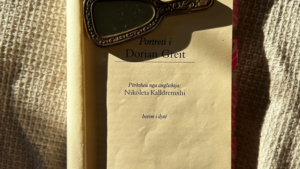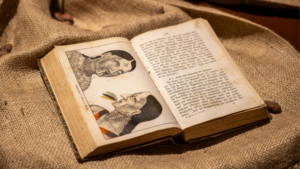The Renaissance, a period of cultural rebirth, was a time when Europe looked back to its roots, drawing inspiration from an era long past. Among the many sources of inspiration, the influence of Greek culture stood out, leaving a profound impact on Renaissance art and literature.
As we delve into the fascinating journey of answering the question, how do the art and literature of the renaissance reflect the influence of the ancient Greeks, we’ll discover the timeless connections that bind us to our past and shape our present.
Table of Contents
ToggleHow do the Art and Literature of the Renaissance Reflect the Influence of the Ancient Greeks?
The Influence of Humanism
 The core of Renaissance art lies in Humanism, a philosophical mindset esteemed highly in Greek society. Humanism stresses human dignity and worth, often reflected in the human-centric focus found in Greek art and philosophy. Renaissance artists embraced this mindset, leading to a shift in artistic depiction. Instead of heavenly divine-centered art, artists such as Raphael and Michelangelo exhibited an earthly focus, emphasizing human emotion, intellect, and physical perfection, reminiscent of the works of ancient Greek philosophers like Socrates and Plato.
The core of Renaissance art lies in Humanism, a philosophical mindset esteemed highly in Greek society. Humanism stresses human dignity and worth, often reflected in the human-centric focus found in Greek art and philosophy. Renaissance artists embraced this mindset, leading to a shift in artistic depiction. Instead of heavenly divine-centered art, artists such as Raphael and Michelangelo exhibited an earthly focus, emphasizing human emotion, intellect, and physical perfection, reminiscent of the works of ancient Greek philosophers like Socrates and Plato.
Rediscovery of Classical Sculpture and Anatomy
More tangible connections between Renaissance art and Greek antiquity emerge with the rediscovery of classical sculpture and anatomy. During excavation, numerous monuments and artifacts of ancient Greek and Roman civilizations unveiled an unrivaled mastery of depicting the human form. Renaissance artists, awestruck by the ancient attention to detail, began to reflect this style in their work.
Greek Mythology in Renaissance Painting
Enables a further insight into the answer of the question, how do the art and literature of the renaissance reflect the influence of the ancient greeks?
The Revival of Greco-Roman Themes
 Renaissance painting, rich in narrative and symbolism, saw a resurgence of Greco-Roman themes due to its natural alignment with the era’s humanist thought. Treasured Greek texts, previously lost to Western civilizations in the Middle Ages, made a stimulating re-entry in the 14th century. Their recovery from the East had a transformative impact, reintroducing epic tales of heroes, gods, and goddesses. Artefacts and sculptures unearthed during that time also served to strengthen this cultural reconnection.
Renaissance painting, rich in narrative and symbolism, saw a resurgence of Greco-Roman themes due to its natural alignment with the era’s humanist thought. Treasured Greek texts, previously lost to Western civilizations in the Middle Ages, made a stimulating re-entry in the 14th century. Their recovery from the East had a transformative impact, reintroducing epic tales of heroes, gods, and goddesses. Artefacts and sculptures unearthed during that time also served to strengthen this cultural reconnection.
Famous artists of the period, such as Sandro Botticelli and Titian, utilized these ancient stories as creative fodder in their visual interpretations. For example, Botticelli’s “The Birth of Venus,” showcases the quintessence of this trend, transforming the Greek goddess’s mythical birth into a captivating visual spectacle. Greek mythological themes, remarkable for their timelessness, contributed significantly to the complexity and depth of story-telling in Renaissance painting.
Iconography and Allegory
The ingenious use of iconography and allegory became instrumental in bringing Greek myths to life on the Renaissance canvas. These tools didn’t simply add visual appeal but had the dual purpose of representing grand narratives and veiling complex philosophical notions within enchanting pictorial scenes.
Literature during the Renaissance: Echoes of Greek Epics
Philosophical Dialogues and Their Ancient Inspiration
R enaissance literature bears significant marks of Greek philosophy, its ideas nurtured and shaped by dialogues influenced by ancient Greek scholars like Socrates and Plato. Renaissance philosophers, like Erasmus of Rotterdam, aimed to bridge the gap between ancient wisdom and present scenarios, harnessing the format of Greek dialogues. His works, including “The Praise of Folly,” used dialogues to convey philosophical discourses, embodying a sharp illustration of Greek influences.
enaissance literature bears significant marks of Greek philosophy, its ideas nurtured and shaped by dialogues influenced by ancient Greek scholars like Socrates and Plato. Renaissance philosophers, like Erasmus of Rotterdam, aimed to bridge the gap between ancient wisdom and present scenarios, harnessing the format of Greek dialogues. His works, including “The Praise of Folly,” used dialogues to convey philosophical discourses, embodying a sharp illustration of Greek influences.
Moreover, the works of Thomas More, namely “Utopia”, stand testament to Greek influence as they reflect the dialogue format and philosophical concepts reminiscent of Platonic dialogues.
Must Know About How do the Art and Literature of the Renaissance Reflect the Influence of the Ancient Greeks?
The Renaissance era was truly a rebirth of Greek influence in the realms of art and literature. Artists like Michelangelo and Da Vinci found inspiration in the intricate details of classical Greek sculpture, while Botticelli and Titian breathed life into ancient myths through their paintings. This fusion of the old and the new brought about an era of enlightenment, giving an answer to the question how do the art and literature of the renaissance reflect the influence of the ancient greeks?
